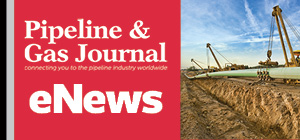Report: Pipeline Pigging Systems Market to Increase Through 2021

According to Technavio’s latest report titled ‘Global Pipeline Pigging Systems Market 2017-2021,’ pipeline pigging systems are expected to increase worldwide at a CAGR of almost 4% within the next five years.
In the report, the company’s energy analysts highlight three factors that are contributing to the growth of the global pipeline pigging systems market:
Increasing corrosion in oil and gas pipelines
With ongoing research into corrosion and technological progress in corrosion inspection and monitoring tools, there seems to be no progress in reduction of corrosion issues over the years. The oil and gas industry is operating a large global pipeline network in which corrosion poses a major problem.
“Proper implementation of corrosion management strategy is of prime essence for monitoring, inspection, and mitigation of corrosion,” Thanikachalam Chandrasekaran, a lead energy storage research analyst at Technavio, said. “The focus must be on practical management and resource identification to implement effective corrosion management.”
Economic advantages of pipeline transportation
The overall economic benefits of any form of transportation cannot be generically established, and these heavily depend on the project contours. However, studies over the past half century of studies have deduced and established the significant advantages of pipeline transportation in many of the concerned parameters. As the use of trucks and cars for the transportation of natural gas is highly debatable over medium to long distances, the discussion is limited to LNG and pipelines only.
“The transport of crude oil, natural gas, and condensate is more economical through long inter-country and cross country pipelines as compared to rail, road, or sea transportation, added Thanikachalam. “Thus, the transportation of crude oil, natural gas, and condensates will grow through pipeline mode, which should boost the global pipeline pigging systems market.”
Stringent government regulations
Pigging systems are used for conveying combustible or non-combustible materials, water, and gases through the system using pressure in the propellant in compliance with the regulations. There are many laws, guidelines, and regulations to design, install, and operate a pigging system.
For more information and to view the full report, visit http://www.technavio.com.
Related News
Related News

- Kinder Morgan Proposes 290-Mile Gas Pipeline Expansion Spanning Three States
- Enbridge Plans 86-Mile Pipeline Expansion, Bringing 850 Workers to Northern B.C.
- Intensity, Rainbow Energy to Build 344-Mile Gas Pipeline Across North Dakota
- Tallgrass to Build New Permian-to-Rockies Pipeline, Targets 2028 Startup with 2.4 Bcf Capacity
- TC Energy Approves $900 Million Northwoods Pipeline Expansion for U.S. Midwest
- A Systematic Approach To Ensuring Pipeline Integrity
- U.S. Pipeline Expansion to Add 99 Bcf/d, Mostly for LNG Export, Report Finds
- Enbridge Adds Turboexpanders at Pipeline Sites to Power Data Centers in Canada, Pennsylvania
- Great Basin Gas Expansion Draws Strong Shipper Demand in Northern Nevada
- Cheniere Seeks FERC Approval to Expand Sabine Pass LNG Facility




Comments